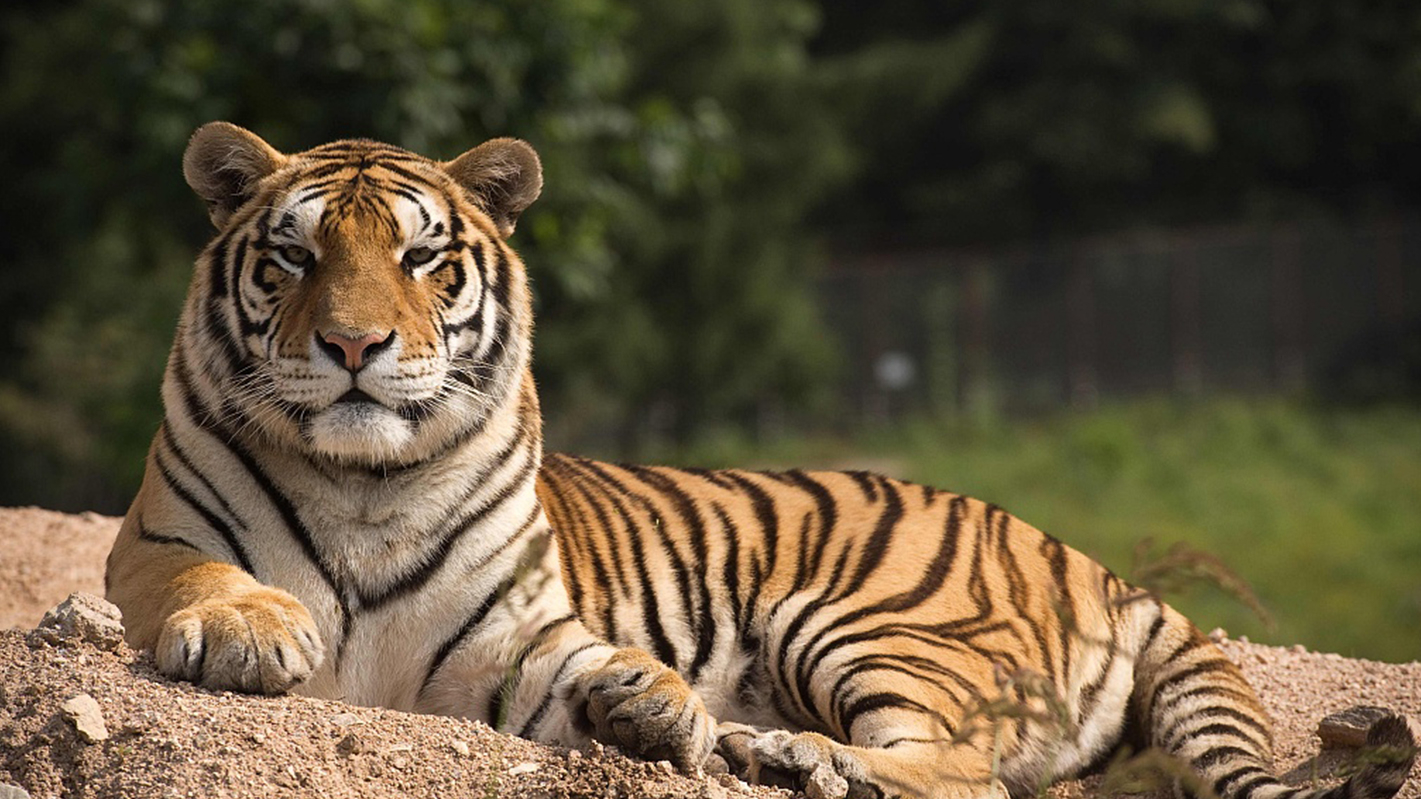

The Siberian tiger, also called the Amur tiger, has faced the threat of extinction for years.
Some, however, live in captivity at the Hengdaohezi Feline Breeding Center, located in the city of Mudanjiang in northeast China's Heilongjiang Province.
In the breeding center's forest park, Siberian tigers are fed living prey and trained to survive in the wild. During filming, they even attacked one of CGTN's drones.

In the Hengdaohezi Feline Breeding Center, a tiger was holding a broken drone that it just attacked in the air. /CGTN Photo
The Siberian tiger is one of the most endangered animals in the world. It's also one of the largest and heaviest carnivorous species of the cat family. There are only about 400 of them left on earth today.
The Hengdaohezi Feline Breeding Center is the largest of its kind in the world. It was founded in 1986 with just eight Siberian tigers. Since then, the center has bred more than 1,000 of them. In just the last year, nearly 130 tiger babies have been born in the center.
Over the past three decades, China has been striving to protect its Siberian tigers, fighting against the hunting and trading of tigers and restoring their habitats.

Surveillance camera captured a tiger family walking in the wild in January, 2019. /CGTN Photo
A national park for Siberian tigers and Amur leopards was founded in China in 2016. Its protection area is as large as 14,600 square kilometers, covering Jilin and Heilongjiang provinces.
Siberian tigers live mostly in Russia's Far East and in northeast China.
China also has been cooperating with Russia to protect the tigers. Using surveillance videos, experts have concluded that more Siberian tigers have crossed the border from Russia into China.
Experts say it's because the ecological conditions in northeast China have greatly improved.
Now the number of wild Siberian tigers in China has increased to more than 20. Experts warn it's still a very small number and protection efforts should strengthen and continue.
(Cover image: Two tiger cubs in Hengdaohezi Feline Breeding Center. /CGTN Photo)
(If you want to contribute and have specific expertise, please contact us at nature@cgtn.com.)

Copyright © 2018 CGTN. Beijing ICP prepared NO.16065310-3
Copyright © 2018 CGTN. Beijing ICP prepared NO.16065310-3